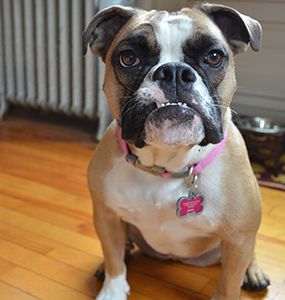Dr. Phil Zeltzman is a mobile, board-certified surgeon in Allentown, PA. Find him online at www.DrPhilZeltzman.com. He is the co-author of “Walk a Hound, Lose a Pound” (www.WalkaHound.com).
Kelly Serfas, a Certified Veterinary Technician in Bethlehem, PA, contributed to this article.

Dogs and cats commonly develop “lumps and bumps” just about anywhere on or under the skin. Because what feels like a “fatty mass” or lipoma may in fact be something much worse, it is always advisable to have it checked out by your family veterinarian.
There are basically three types of masses. Some are harmless or benign lumps. Sometimes the benign lumps can grow aggressively and end up being very difficult or impossible to remove depending on their location. And then there are cancerous or malignant masses.
"Keep an eye on it" is not considered an appropriate tactic for several reasons. If it becomes too big, even a benign mass can be very challenging to remove. It will cause more discomfort and will cost more in vet care. In some cases, even a benign mass may require, say, a leg amputation because it has become too large. If the mass is cancerous, then denial or delaying surgery are not in your pet's best interest.
Before surgery, your family vet may want to run blood work and take chest X-rays to make sure your pet is otherwise healthy and that nothing has spread to the lungs. Sometimes small skin growths or warts can be removed as an "outpatient" procedure. Other growths are removed under general anesthesia and require more intensive postop care.
Sending the lump to be analyzed at the lab is always recommended. We have a little saying about tumors: "If it is worth taking out, it is worth sending in!" Many steps are involved. The lump is placed in formalin and packaged with a submission and history form. It is then shipped to the lab, sometimes out of state. The lump is then examined, sliced and closely evaluated under a microscope by the pathologist.
The whole process usually takes 5 to 7 days. The pathologist then sends a report to your family vet, describing what was seen and what the diagnosis is. Only then can your vet call you with the final results. A plan of action is then discussed: no further treatment, regular check-ups to make sure the mass doesn’t come back, chemotherapy, radiation therapy etc.
Another option when dealing with a skin mass is to take a biopsy. Here, a small sample of a lump is harvested to obtain a diagnosis before the whole mass is removed. Biopsies can be obtained with a large needle, or with a small surgical procedure.
A biopsy should not be confused with an aspirate, or fine needle aspirate (FNA). A tiny needle is stuck inside the mass, usually several times. Some cells are “aspirated” or sucked into the needle. They are placed onto a glass slide, which is then stained. The pathologist can look at it under the microscope to give a diagnosis. The benefits of an aspirate are that they are easy (no anesthesia required), fairly harmless, quick and cheap. However, the relationships and the architecture of the tissue cannot be evaluated with an aspirate, so the information can be very different than that from a true biopsy.
To summarize, with a biopsy, one piece of tissue is removed (or several pieces), so the architecture of the tissue is preserved. Therefore, a biopsy is almost always more accurate than an aspirate. In some cases, it may be advisable or necessary to do an aspirate, and then a biopsy to get the full picture. Only then can you and your family vet discuss the next steps, which may involve surgery.
To summarize, if you notice your pet has lumps or bumps, it is always in you and your pet's best interest to consult a veterinarian to determine the nature of the bumps. It's better to be safe than sorry!
If you have any questions or concerns, you should always visit or call your veterinarian – they are your best resource to ensure the health and well-being of your pets.
